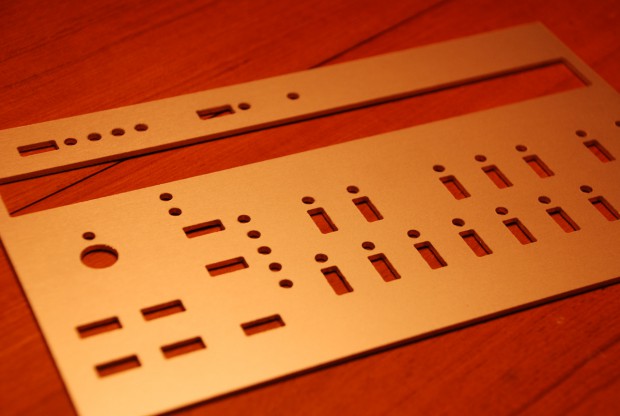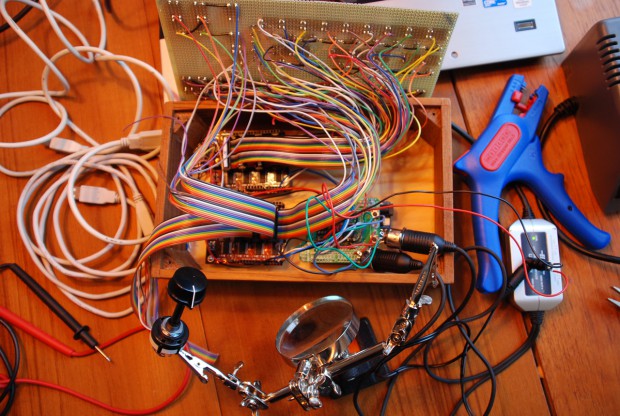Step Brother 16
Step Brother 16 was a project i started working on in 2011. The project is currently dead, but the knowledge, ideas and the experience I gained lives on. For me it was a great way to practice design and start learning electronics, construction, manufacturing, programming MIDI, Renoise scripting and Arduino c/c++ programming.
The idea was a DIY x0x-style hardware step sequence DAW controller. It’s purpose was to give a nice and inspiring retro interface for computer-based electronic music creation.
There are a lot of DAW controllers available, but they are all modern, flashy and … boring. This interface is inpired by the pioneering machines from the early 80´s, like the Roland TR-808 and TB-303. The main focus was step sequence composing, not to much on live performance.
It is based on the Arduino electronics programming platform and Renoise tracker. The hardware/Arduino part is just a dumb box with buttons and leds that sends and recieves MIDI. Then there’s the software part consisting of a Renoise script that acts on the incoming commands and sends commands to reflect the state of the song. So, the idea was that you could make implementations for other DAW:s.
Initially I thought about making a stand-alone hardware step-sequencer based on Arduino, but after giving it some though I came to the conclusion that nothing does the job better than your digital audio workstation. At the time Renoise had just released their scripting support, so that was a perfect match.
I was building it for my own use, but I aimed to make it an open DIY project based on standard electronics components, so anyone can build one themselves. The components would be standard and placed on an regular experiment board.
I found nice 808:ish led buttons from the manufacturer Omron, but they were not available in the right colors so I spray painted them using acrylic paint.
I had the front panel cut out using water jet cutting. The result was ok but a bit grainy. For the prototype I printed the design onto a an adhesive paper and attached it.
The enclosure for my prototype is a nice wooden box crafted by my dad, inside is the Arduino and two Centipede shields. The Centipede shields gives a total of 128 digital inputs/outputs.
So I guess this last picture sums up why the project died. There’s a cable for every button and led. Every time i opened the lid a cable would detach, so I realized that I needed to make a custom PCB, and making such a large PCB is really expensive. Add to that manufacturing and print of the panel, enclosure and so on.
It just got too big to handle and hard to pull off.




